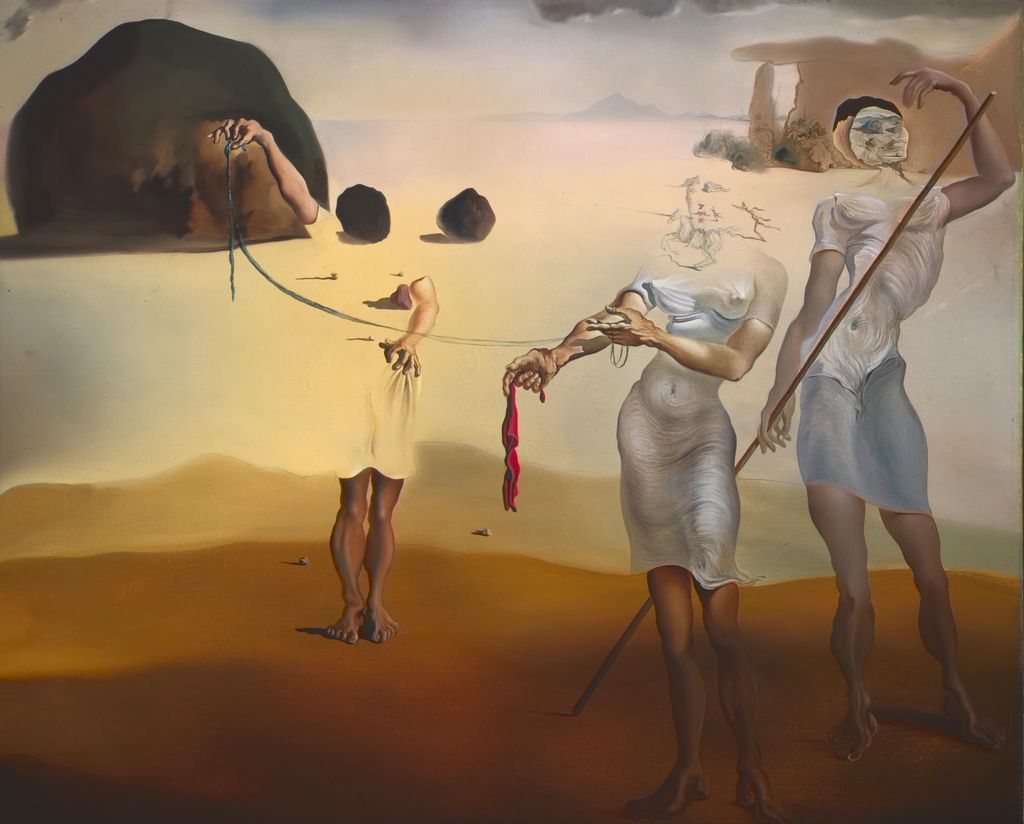Enchanted Beach with Three Fluid Graces, 1938 by Salvador Dali

Enchanted Beach with Three Fluid Graces belongs to Dali's extended series of "anthropomorphic landscapes" of the mid- to late 1930s. It shares with Paranonia the visual conceit of a woman's face composed of figures and horsemen, and, with The Man with the Head of Blue Hortensias, the configuration of a head composed of landscape elements: a boulder in the case of the figure to the left, and an open cavity in a rock formation in the case of the figure to the right. As Dali continued to exploit the fluid passage between objects and ambient space, he increasingly resorted to a vocabulary of stock images and familiar visual puns.
The classical reference to the Three Graces by Raphael, symbols of ideal beauty, may be interpreted as an allegory of Dali's assault on the Renaissance tradition of form, which locates a unitary subject at the origin of a rational spatial system. As Dali collapses perspective and dismantles familiar figure/ground relationships, a different conception of the subject engenders the visual field: the mobile subject of desire whose precise coordinates cannot be mapped.























